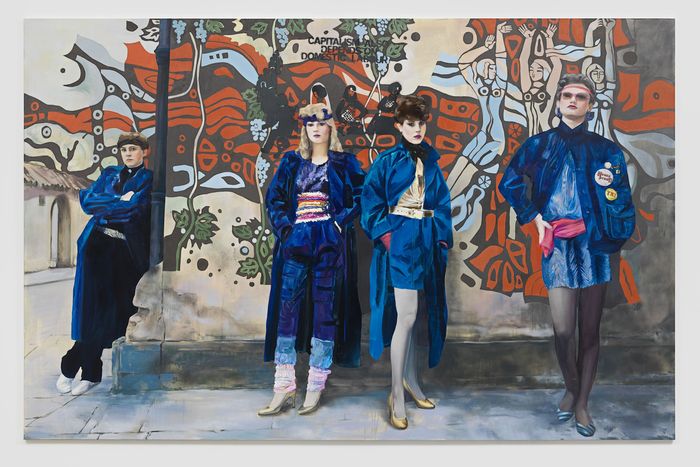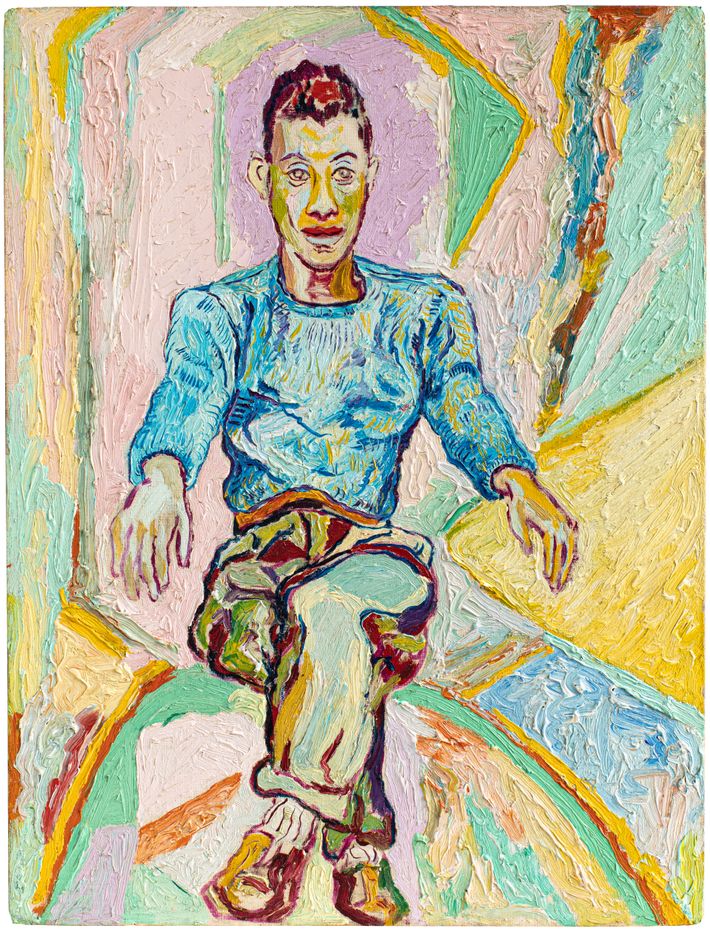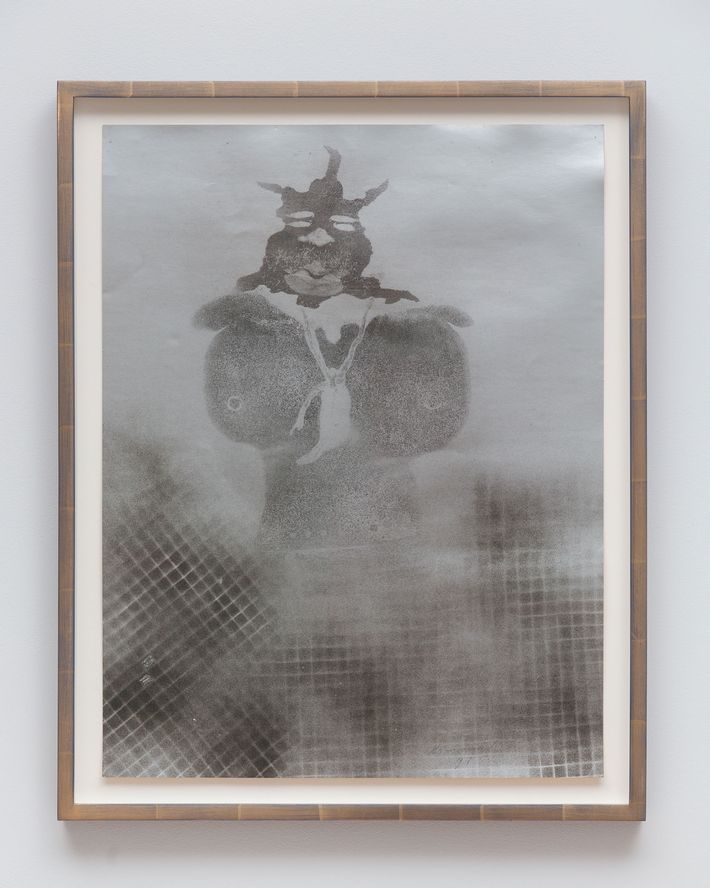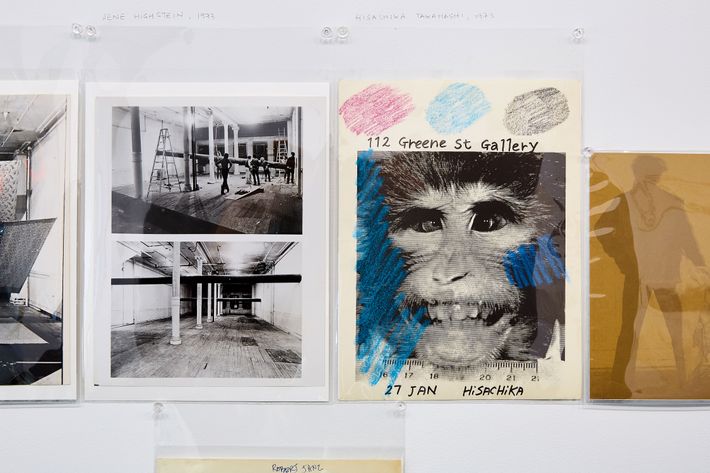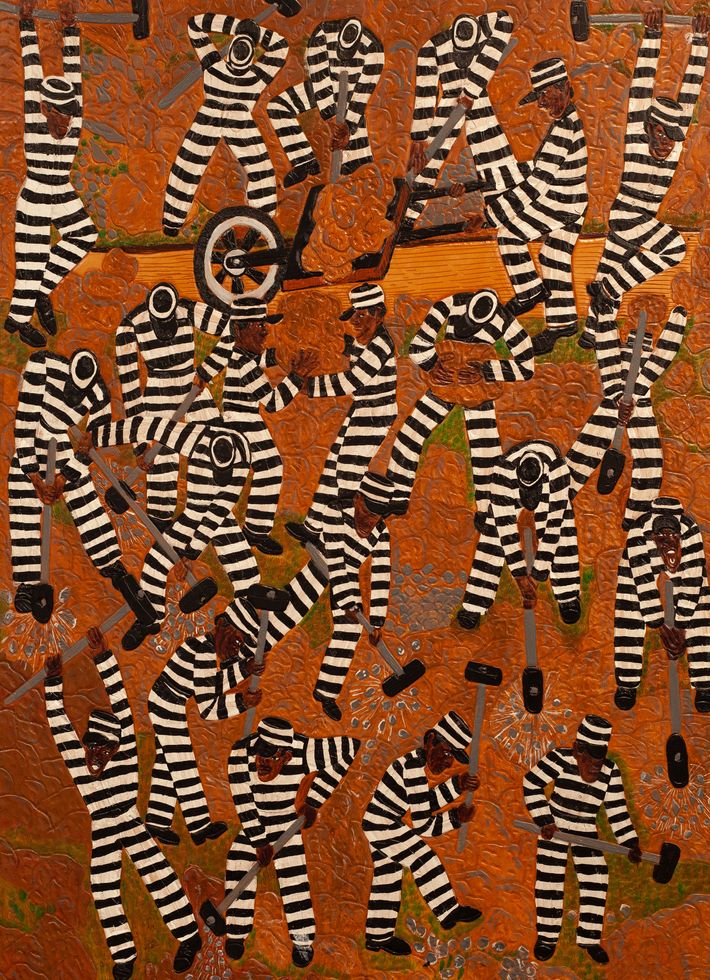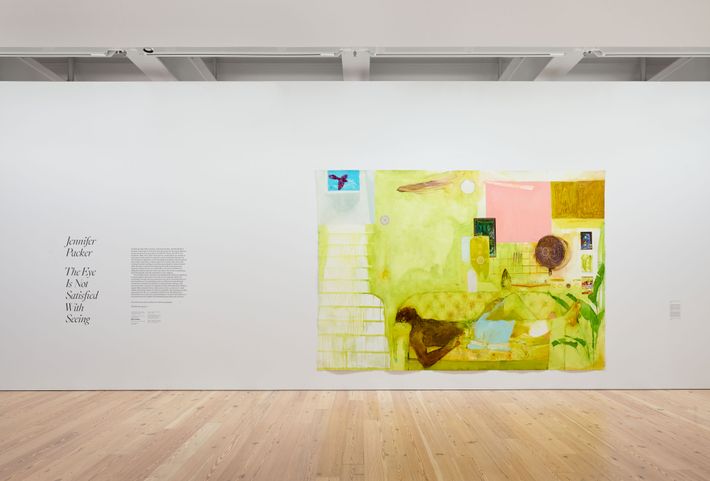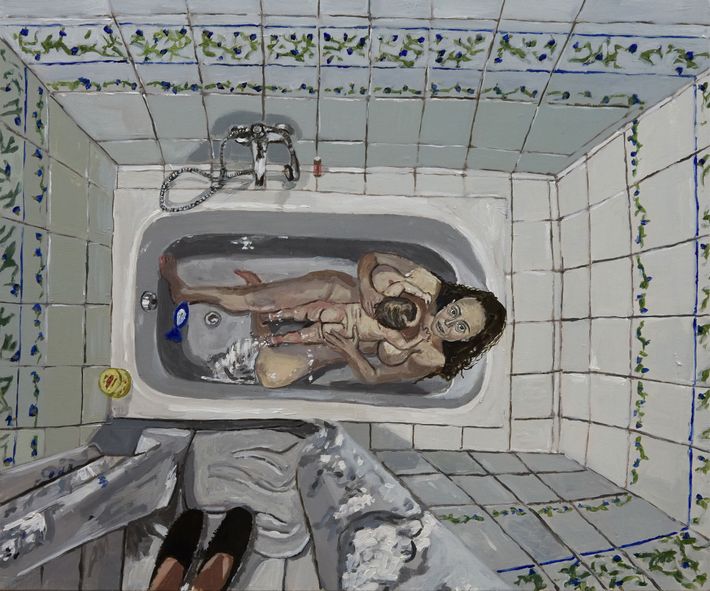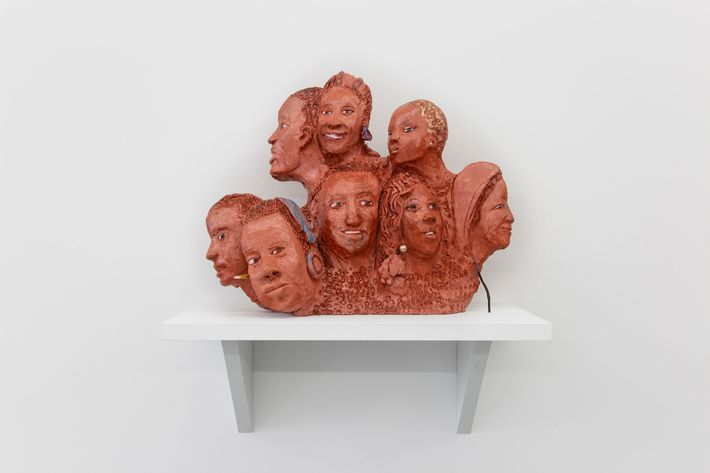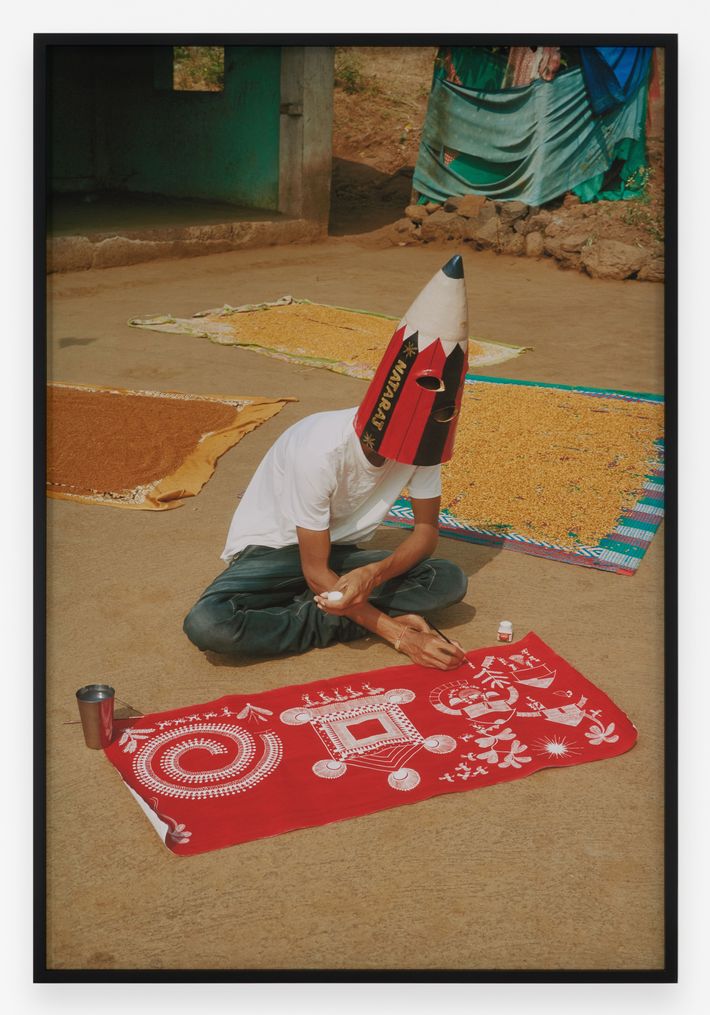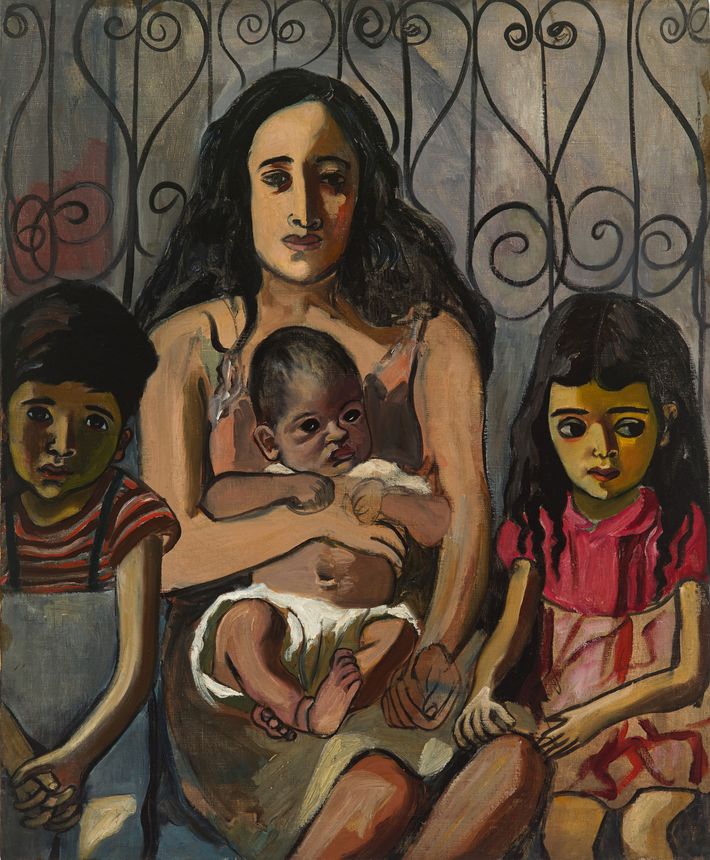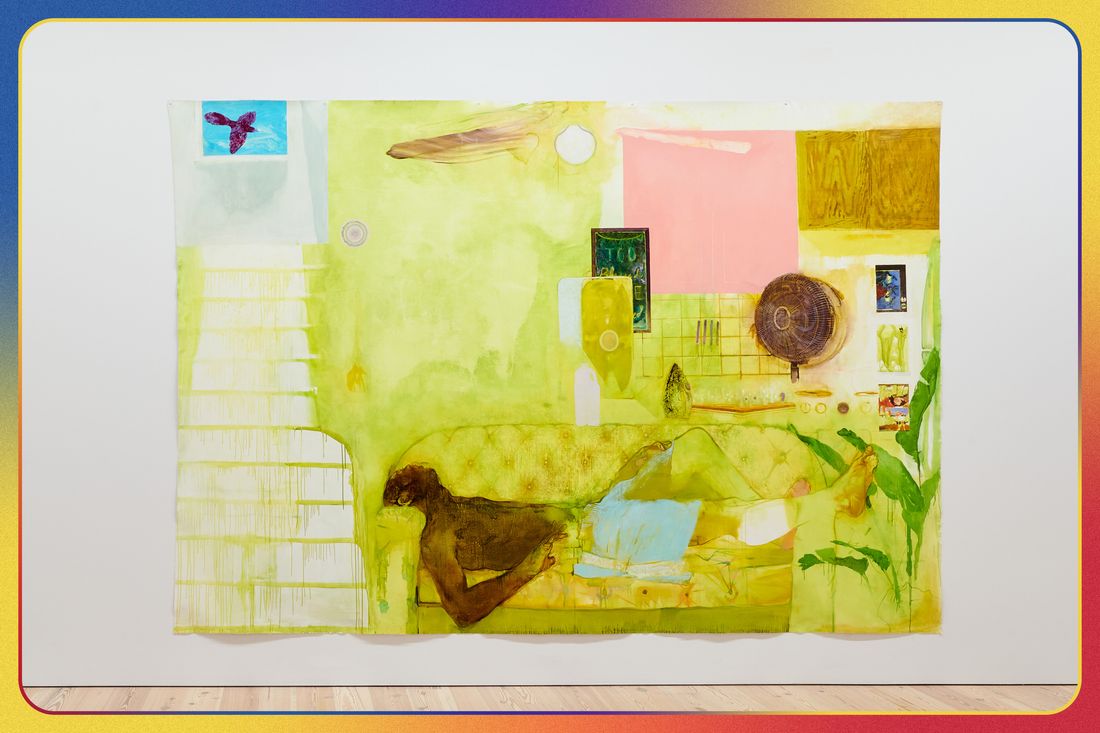
Somehow, New York galleries — places where art can be seen for free, often run by one or two people on tiny margins — had a tremendous year of exhibitions. When galleries shut down at the beginning of the pandemic, many, including me, surmised most of these spaces wouldn’t survive. I was wrong. Almost all did.
On the other hand, once COVID restrictions eased, much of the art world rushed to return to a system that everyone said they hated. Art fairs reopened and are multiplying. Most of the gallerists who swore they’d never go back to the fairs are going back, as are the collectors, curators, museum directors, and critics who pledged the same. Galleries still earn as much as half their year’s sales at these wingdings, and a handful of mega-galleries control maybe 75 percent of the market. Auction houses, the cockroaches of the art world that seem to survive everything, smelled fresh blood — investors with pandemic money, looking to buy art — and moved aggressively. They always sold contemporary art, but now they’re doing it more than ever.
The art world we left in early 2020 is not exactly the one we find ourselves in now: The biggest change is that this super-wealth and hyper-activity is cloaked now as a social concern. Heady curators travel the world “discovering” unknown artists everywhere, while ignoring the artists in their own backyards. Some choose to only show overlooked and dead artists, making it impossible for critics to criticize these efforts without seeming churlish, or worse.
Yet all this is bringing something fantastic and necessary to the mix. As much as a lot of it feels like conscience-laundering and box-ticking, it has completely changed what exhibition schedules look like in one existentially tremendous regard: For the first time, American galleries, museums, and much of the market are getting more equitable — showing, selling, and celebrating more work by women artists, more work by artists of color. It is now impossible to imagine a big biennial or museum group show of all white male artists. We may be entering the most exciting era of art history ever, as everything is being rewritten, rethought, corrected, and examined. Of course, a percent of this work will be mediocre. But no greater percent will be bad than was true when mainly white men were sold and lionized. In time, the good will win out and the rest will be forgotten, as it always is.
Against the financial odds, smaller and mid-sized New York galleries — the kinds of spaces the sun can set on, the kind without locations around the globe — did amazing shows. They stayed flexible, charismatic, and fun. To lifers like me, galleries didn’t seem as crowded. But everyone you saw there seemed eager to talk, passionate about seeing art again in the flesh, grateful to be there at all. All this made the art world feel smaller, not bigger. Over the buzz of the market, we may immerse ourselves once again. With a gaggle of great museum exhibitions (institutions that suffered huge drop-offs in attendance), excellent shows and a much-needed shift toward inclusion meant that New York galleries ruled.
10.
Adieu and Godspeed, Metro Pictures Gallery
One of the ground zeros of the gigantic explosion that was the 1980s art world closed this month. Founded in 1980 by Janelle Reiring and Helene Weiner, this gallery specialized in cooler, conceptual, theoretical work, showcasing artists such as Cindy Sherman, Martin Kippenberger, Louise Lawler, Mike Kelley, Robert Longo, Jack Goldstein, Gary Simmons, Isaac Julien, Trevor Paglen, Richard Prince, B. Wurtz, Camille Henrot, Laurie Simmons, and Walter Robinson, among others. In high years and low, this gallery is one of a handful that may be said to have changed art history. It stands among the greatest of the past century. It was also once so cool that for the first few years I lived in New York, in the early 1980s, I was afraid to go in.
9.
“Be Your Wonderful Self: The Portraits of Beauford Delaney,” Michael Rosenfeld Gallery
The first day Beauford Delaney got to New York in 1929, he slept on a Union Square bench, and someone stole his shoes. The next morning, he walked to Harlem. Between then and his death in 1979, Delaney created a series of tremendous portraits of those in his social milieu, including W.E.B. Du Bois, Duke Ellington, Jean Genet, and a visionary image of the young James Baldwin, to whom he was something of a surrogate father. After decades of being passed over in the U.S., Delaney left New York forever in 1953 and moved to Paris. For a while, art history all but forgot him. Over the past couple of decades, though, thanks to gallerists like Michael Rosenfeld (who specializes in righting these types of wrongs), Delaney is on course to claim his rightful place in the American pantheon.
8.
“David Hammons: Body Prints, 1968–1979” and “Ways of Seeing: Three Takes on the Jack Shear Drawing Collection,” Drawing Center
Speaking of great New York nonprofit spaces: Once upon a time, from about 1977 to 2007, the Drawing Center was one of the most essential, trailblazing spaces in America. Then came over a decade of dreary shows that made it seem as if the director and curators were auditioning for jobs in the big time. Over the past few years, however, director Laura Hoptman and her tiny staff have zapped this sleeping giant back to vibrant life and this year mounted two of the best shows anywhere. First, David Hammons dropped bombs with his early drawings and body prints — in which he drew or pressed his own greased, naked, or clothed body against paper and glass doors and made images of Afro haircuts, all while creating strange, talismanic iconography that spoke to race in America. Then, to close the year, came a three-part installation of drawings made from the Renaissance to today — all from the collection of photographer Jack Shear, husband of the late Ellsworth Kelly. Welcome home, prodigal gallery.
7.
“From the Archives: White Columns & 112 Greene Street — 1970–2021,” White Columns
It may not be possible to overstate how consistently excellent White Columns has been since its inception in 1970. Not only was it among the first, glorious wave of nonprofit spaces that blossomed in that decade, it has opened doors for more young artists than any space of its kind in New York history. Over the past 15 years, under director Matthew Higgs, it has been at the forefront of art by the self-taught, the disabled, and all of us who came into the art world through the back door. It’s unpredictable and ahead of the curve. Anyone may submit work here — and might be chosen. That is radical openness. This stripped-down retrospective of the gallery’s history came in the form of invitations, old pics, letters, and paraphernalia tacked to the wall in a wrap-around timeline. It was a magnificent testament to an institution that has never lost the thread.
6.
“Winfred Rembert: 1945–2021,” Fort Gansevoort
What a nightmare this country has been for Black Americans. Witness the artist Winfred Rembert, who grew up in Georgia and died this past March at the age of 75: He survived a near lynching and near castration at 21, imprisonment, and time working on chain gangs. Then, at 51, he started making extraordinary painted and carved images of all he’d experienced, working on leather. His densely populated, intensely colored tableaux of figures in prison uniforms toiling in fields are psychedelic looking glasses onto the long American night of racism. His art is one of the greatest documents of life in the South and much else; see his images and feel the winds of history, hatred, and love. With the help of a few recent gallery shows, Rembert should soon be recognized as a visionary worthy of a U.S. postage stamp.
5.
Jennifer Packer, “The Eye Is Not Satisfied With Seeing,” Whitney Museum
We are awash in a kind of highly monetized zombie realism: endless Instagram-ready, high-keyed figurative paintings with flat space and bits of collage added for references to “real life,” which are overly dependent on images of everyday people doing everyday things. Some of this art is great. Most of it is a new, forgettable -ism. Jennifer Packer, though, rises to a next level of painting from life, the photograph, and the imagination. The 37-year-old mixes up different pictorial medicines in her canvases — showing, for example, a person lounging while surrounded by collaged bits depicting scenes of nature, interior decoration, and what might even be memories. The spatial bottom drops out; we feel as if we’re floating. Packer is more than just a “social” painter, and her ideas of abstraction, space, paint, color, and complicated composition connect to artists such as Peter Doig, Mickalene Thomas, and Jonathan Lyndon Chase. Her recent huge, unstretched paintings, on view at the Whitney, show Packer really spreading her wings.
4.
Polina Barskaya, “Still,” Monya Rowe Gallery
Monya Rowe, a teensy tenth-floor gallery on West 30th Street, keeps identifying mostly young, mostly women figurative painters whose work contains private truths and gravity. These artists share an intensity of mind, emotional depth, and radical vulnerability; they also share a higher love of painting. Their craft is focused but not fussy, always on the edge of being out of control. They seem to be trying to catch up to the speed of emotion while having to paint at the speed of materials, and the imbalance makes sparks. In addition to the work of Gretchen Scherer, who portrays imaginary ballrooms and museums filled with miniature pictures, Polina Barskaya’s shares the same tremendous, collapsing density of emotion. Her paintings’ sensuous surfaces rise above whatever the image is. Here, darkly colored and internally illuminated, her gnarly paintings show a woman naked with her child in the bathtub, in bed with her husband, or alone looking at herself in the mirror — a woman (often the artist), lover, mother, and painter on her own vision quest.
3.
Reverend Joyce McDonald, Gordon Robichaux
This self-taught, visionary minister-artist is a modern-day Sister Gertrude Morgan or Sister Mary Corita, giving us perilous nights of bruised faces and brutalized bodies as well as images of private lives and suffering that still somehow contains spiritual joy. Her small painted wall carvings and sculptural retablos of friends, family, saints, and bygone days are made of tinfoil, clay, false eyelashes, and other everyday materials. McDonald, now 70, is a survivor of sexual abuse and addiction who has lived with HIV since 1985. Her work hits us with humility, a reverence for life, and deep secrets of survival. A concentration of energy that almost becomes healing.
2.
Gauri Gill, “A Time to Play: New Scenes From Acts of Appearance,” James Cohan
This artist creates photographs that captivate with their retinal witchcraft and intellectual alchemy. Gill, who was born and is still based in India, made these images with villagers who helped create their own masks, posed as they wished, and gave us a social document that rivets and chills. A powerful activism is embedded in the material and sources of these works; they fill us with the knowledge that every human soul contains deep waters of creativity, resistance, and resilience. Gill joins her countrywoman Dayanita Singh as one of the greatest photographers in the world today.
1.
“Alice Neel: People Come First,” Metropolitan Museum of Art
This retrospective sent a collective shivering depth charge through viewers’ psyches and showed that Neel was the painter par excellence of modern life. So original, raw, harrowing, and loving is Neel’s work that, in her lifetime, critics couldn’t grasp what she was up to. She lived at the edges into her 70s. By the time she finally started to be recognized, this painter, who worked in her living room, had lost one child to disease and another to her estranged ex-husband, suffered a mental breakdown, and saw the art world pass her by for her male peers. In “People Come First,” she emerged as one of the greatest artists of the 20th century and the ne plus ultra painter of pregnant women and motherhood — the colossal, savage tidal force that gives true meaning to “flesh of my flesh.” People lined up in spite of the pandemic to see work by this Balzac of the American human comedy.
Special Mention
In this time of accelerated, limelite artistic careers (many seeming to last only a couple years), a massive hat tip to artists who continue their work for decades at high levels — those with the lives-lived-in-art that we all hope for. Among others of this ilk standing out this year: Karla Knight, Olive Ayhens, Keith Mayerson, Mira Schor, Joan Semmel, Arthur Simms, Loren Munk, Catherine Murphy, and Vera Girivi.
More From This Series
- What’s the Most Memorable TV Moment of 2021?
- The Best TV Trees of 2021
- The First Annual Golden Dolly Awards


